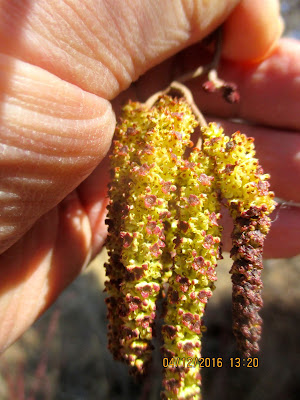 |
| PAPER BIRCH |
Friday, 8:20 AM. 40 degrees F at the ferry dock, 38 on the back porch. Wind still out of the NE, but less intense; calm with light to moderate gusts. The sky is clear, the humidity 76%. The barometer is at 30.22" and steady at present. The seven to ten days ahead is forecast to be a bit warmer and with little or no precpitation. The storms and high winds seem to be abated, and it is a glorious morning.
One evening, when I was maybe fifteen, I found my dad in the basement, sitting in front of the coal furnace, drinking a beer. He had recently bought a small acreage and had started a tree nursery. He was in an expansive mood, and told me to sit down for a little talk. Oh, oh, I thought, I'm in for it now. To my relief he wanted to talk trees.
I think he had in the back of his mind that I should eventually go into business with him, but fate would soon intervene, although neither of us new it at the time. He wanted to talk about Colorado blue spruce and paper birch trees.
"Plant Colorado Blue Spruce and paper birch trees. They always sell, mostly together. People will pay a premium because nothing speaks to the city dweller like the lakes and mountains, and nothing says lakes and mountains better than blue spruce and paper birch."
Long story short, I took his advice, and planted dozens of seedlings of each and nurtured them over the years to saleable size. They paid for a lot of college tuition, and I traded some for a grand wedding cake when Joan and I were married years later. Even traded some to have our first house painted. I did well following Dad's advice.
The Colorado Blue Spruce are pretty much out of favor now because they have become subject to a very debilitating fungal needle disease, for which there is currently no remedy. And the paper birch have always been problematical,
The paper birch,
Betula papyrifera, in the Birch Family, is a tree of the far north, native in North America from the Great Lakes north to the Tundra and all across Canada and Alaska. Used as an ornamental, paper birch are usually planted in locations too hot and dry for them to thrive. The natural habitats of paper birch are stream banks, the edges of swamps, rocky hillsides and wet sands, although they will grow on drier sites in a cool climate.
Even in nature, paper birch are short-lived trees, seldom lasting more than forty or fifty years, if that. They are a pioneer species, requiring sun, and are shaded out by oaks, maples and fir trees. Paper birch trees will often stand dead, held together by their bark, until a strong wind or other disturbance sends them crashing in a pile of lumpy sawdust.
The bronze birch borer often kills whole groves of paper birch, even in the best native habitat, and it sneaks up on ornamental plantings and kills trees often before it is detected. Trying to control the borer in the wild is pretty much impossible, and although it is possible to combat it in the home landscape the effort may not be worth it for what is necessarily an ephemeral tree.
The bronze birch borer is the larvae of a beetle that inserts its eggs under the bark of the host tree, where the borers feed on the cambium of branches and trunks, eventually girdling and killing the tree. Their presence is indicated by raised areas on branches that trace their tunneling. If the bark is peeled back with a sharp knife the tunnels and grubs can be seen. Systemic insecticides can be effective if applied soon enough, but are expensive to use and may not be worth the trouble and environmental hazard.
To make a paper birch last as long as possible in the landscape, it should be planted in good topsoil that is on the sandy side, and it must have good drainage but also adequate moisture. The roots must be kept as cool as possible, which means mulching, or at least not mowing the grass beneath the tree. Under planting with compatible native shrubs is also an option.
There have been a number of hybrids of the paper birch with the European white birch or the eastern gray birch that are more adaptable, and are resistant to borer. Also, the river birch,
B. nigra, has a very ornamental, exfoliating bark when young and sometimes is used in place of the paper birch, although it becomes a much larger tree.
But my dad was right in his assessment, there is nothing like the combination of blue spruce and paper birch. Today I would say substitute the native white spruce for the Colorado blue spruce, and plant the paper birch with the expectation that it is a short-lived species, and enjoy them together as long as nature allows.






















































